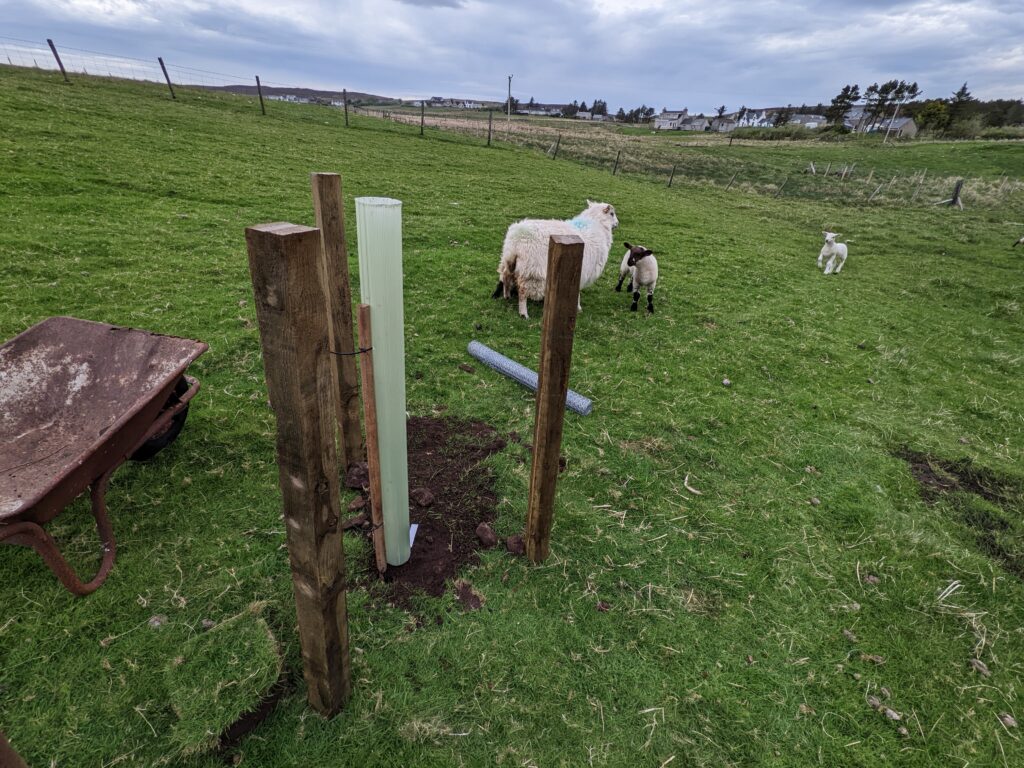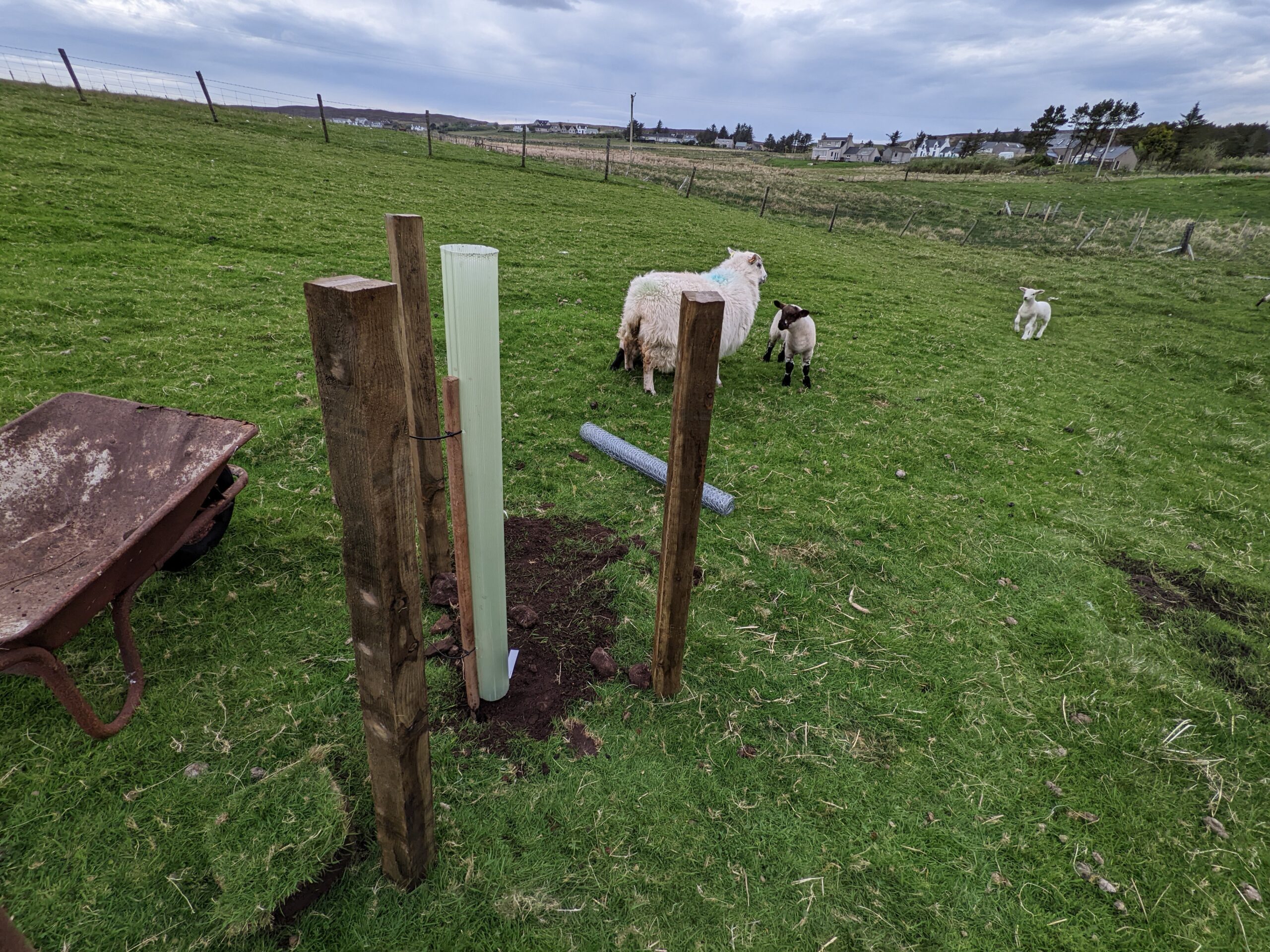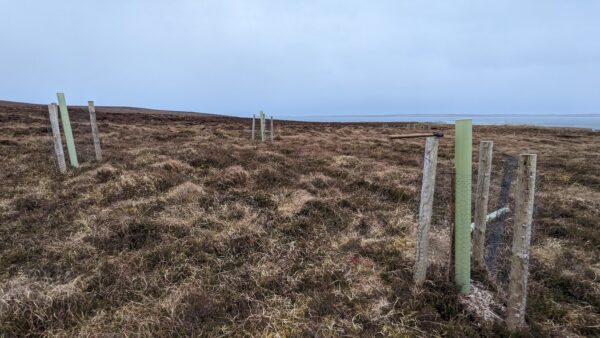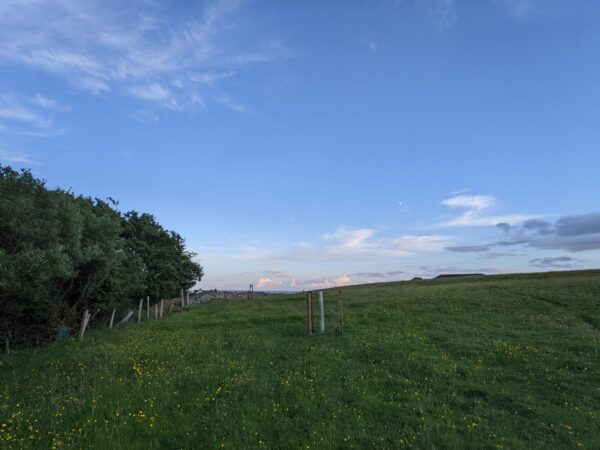I’m starting this blog mostly to keep a log/diary of my adventures in permaculture, re-wilding and whatever other environmental areas I feel like rambling about along the way. I’m continually learning as I go along so, a disclaimer for future rambles – I reserve the right to be wrong now and then. My main project in this area at the moment is on a croft in the Isle of Lewis. It’s a slow but steady project on a croft which my parents’ and grandparents’ homes are built upon. Slow but steady, because I live in Aberdeen, so I only have a few weeks per year at most to do any work on the croft.

What is the project? I don’t have a solid definition of what I want the project to be, but loosely – I’d like to make the croft a more productive and resilient spot of land than what it currently is (a typical Lewis croft consisting of lots of grass and a dozen or so sheep). When I say productive, I mean in terms of providing maximum benefit to whoever lives on it and also giving nature a boost along the way. To me, this means a plot which is able to provide natural resources – food, wood, materials for composting, etc. Resilient, specifically meaning resilient to the climate change-induced swings in weather we’ve been having1 – which are no doubt going to get worse.
So, with all the above in mind – I think it’s safe to call this a permaculture, sustainability and small-scale rewilding project.
Why am I doing this?
Permaculture, rewilding, and climate change are all topics I’ve been personally gaining interest in for over a decade now. These subjects have all been gaining traction over the last decade from what I’ve seen, and with good reason. There are multiple overlapping reasons to undertake something like this:-
- Improving food security
- Instead of having only sheep – a single point of failure, you might now have potatoes and other root vegetables which can be stored year-round, along with seasonal vegetables, berries, and nuts from established trees to reduce dependence on supermarkets. It’s even more important to care about this sort of thing when you’re on an island which gets most of its food shipped over from the mainland.
- Carbon footprint reduction by
- Growing locally instead of sourcing food from the other side of the planet, or even just reducing the transportation distance of food grown in the UK which we have to ship over here via ferry
- Increasing biomass of the land via native trees, shrubs and the wildlife they support. Even if you burn any wood you grow from coppiced trees, they’re a renewable resource, unlike coal, oil, gas etc.
- Rewilding with native trees, which will
- Support local biodiversity/species by returning the land to its natural state
- Improve soil fertility over time via the breakdown of leaves/composting
- Improve moisture retention in the soil
- Provide shade and shelter to any sheep on the croft
- Provide raw materials for various projects (willow for example is a fantastic material with many uses)
- and many more reasons such as forests being shown to be more resilient to climate change than just a grassy area. I could go on and on…
Lots to expand on in there but essentially, at the moment, our croft is a single, not very complex or resilient system – it’s used for grazing sheep and nothing more. Raising sheep is fine, and the sheep have no doubt contributed to the soil quality over years of grazing – though sheep by themselves aren’t going to maximise the resilience and food production capacity of the land. If push comes to shove in the coming decades and we have years of global-scale drought which affects our food system – we’re in hot water if all we have on the land is a few dozen sheep. Going back to the establishment of the crofting system – a croft itself was intended to be sizeable enough to be able to provide a family with food for the year. Being able to survive completely off the land is absolutely possible, but it does take effort and isn’t something that can be achieved in a year or two. My plan is just to slowly increase the productivity of the land over time, whilst learning the best methods along the way.
Back to the sheep – they belong to my father, so I’m approaching this delicately, with salami tactics in mind. He’s not anti-environment, but he wouldn’t be OK with me planting a forest in our croft overnight. He seems fine with a few trees a year though, and before he knows it…. bam – native tree paradise! The good thing is sheep can happily coexist and be a major contributor in a permaculture system – benefiting from tree shelter, and more. I’ll also mention, it was my father who first introduced me to potato planting when I was small – it was a family affair when the spuds had to be planted on my grandfather’s croft every spring. It was all hands on deck when the tractor came by to plough that year’s potato patch. Everyone got given a bucket full of cut-in-half spuds and lined up behind the tractor as it churned up the soil, folding a row of soil over the spuds we shoved into the ground. That’s a story for another day, though!
More updates coming soon!
Footnotes
- There have been an increasing amount of drought spells across the UK in the last decade – even affecting the rainy Scottish Highlands and Islands. You can probably still see it on the Google Maps satellite imagery but the grass in areas of our croft was yellow and dead that year – almost like it had been set on fire. ↩︎




One Comment
Excellent blog!! Look forward to reading more from you.